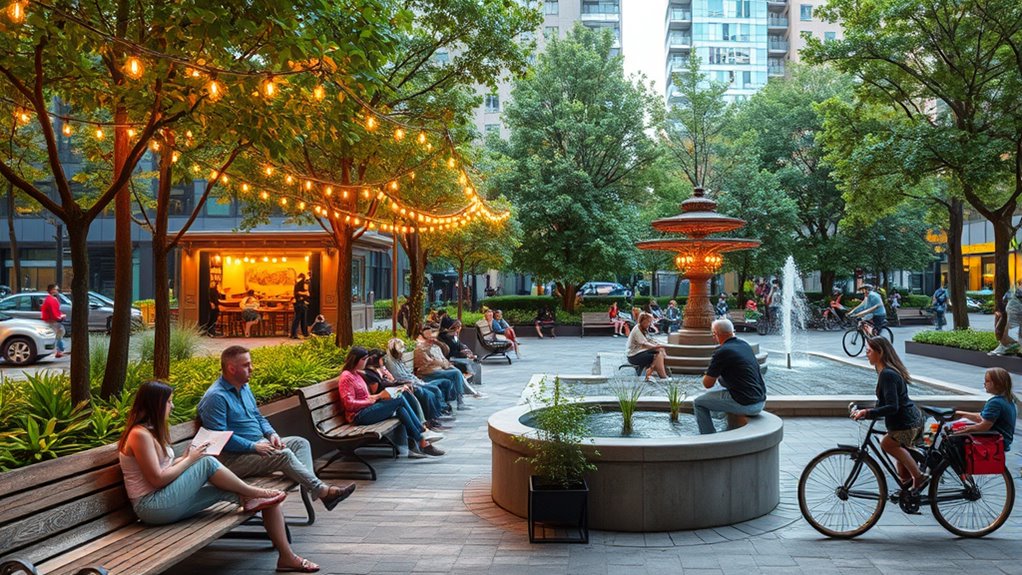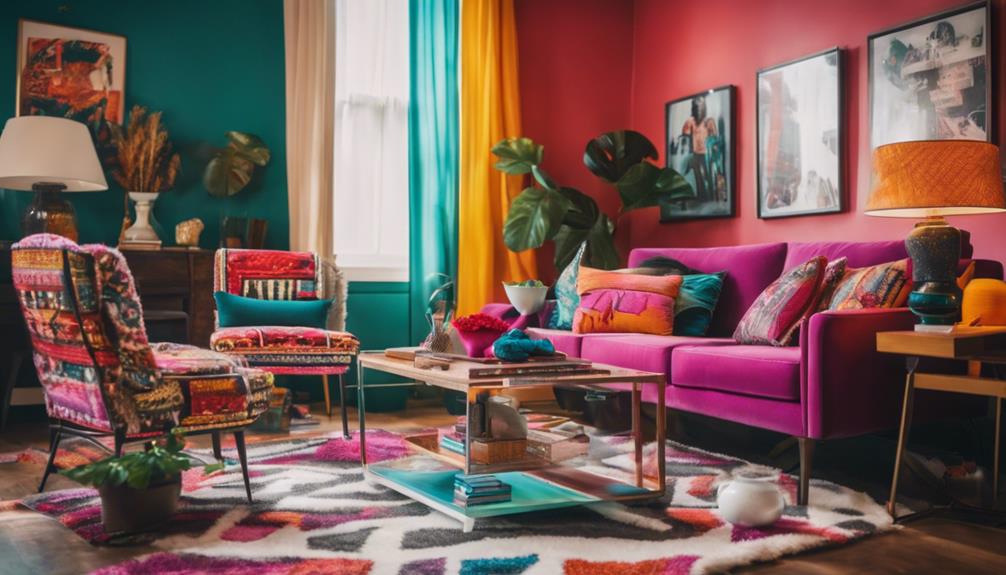Third places are essential social environments outside your home and work where you can build genuine connections, feel safe, and foster a sense of belonging. They help reduce loneliness, strengthen community ties, and support emotional well-being. Cities are reimagining these spaces—like parks, cafes, and markets—to promote social interactions and urban cohesion. Staying engaged with this topic reveals how these environments shape your emotional resilience and community connection.
Key Takeaways
- Third places foster social bonds, trust, and emotional resilience, enhancing community cohesion and individual well-being.
- They provide familiar, judgment-free spaces that encourage genuine interactions and reduce feelings of loneliness.
- Designing welcoming, comfortable environments promotes openness, authenticity, and emotional comfort in social exchanges.
- Urban reinvention transforms spaces like warehouses and parks into hubs that facilitate social activities and community engagement.
- Reimagining third places supports mental health, social participation, and a sense of belonging in growing city populations.

Third places—those social environments outside of work and home like cafes, parks, or community centers—play a crucial role in shaping our well-being and sense of belonging. These spaces aren’t just spots to pass time; they serve as anchors for community bonding and foster social comfort. When you step into a local coffee shop or a neighborhood park, you’re engaging in more than just a casual activity—you’re participating in a larger social fabric that supports your mental health and emotional resilience.
These environments offer a unique sense of familiarity and safety, making it easier for you to connect with others on a genuine level. Community bonding thrives in third places because they encourage repeated interactions. Unlike transient encounters, these spaces allow you to build relationships over time, transforming acquaintances into friends. As you share conversations, participate in local events, or just observe your surroundings, you develop a sense of trust and belonging.
Third places foster genuine connections through repeated interactions, transforming acquaintances into trusted community members.
This process strengthens social bonds, which are essential for your overall happiness and community cohesion. When you’re part of a thriving third place, you feel more rooted and supported, knowing that you’re not isolated in your daily routine. Social comfort is another key benefit of these environments. They create a neutral ground where you can be yourself without judgment or pressure.
Whether you’re having a quiet moment alone or engaging in lively discussions, third places provide an atmosphere that’s conducive to authentic interactions. This comfort encourages you to open up, share your thoughts, and listen to others, which deepens your sense of connection. Over time, this familiarity fosters trust and reduces feelings of loneliness, making these spaces feel like extensions of your community. Additionally, the design and layout of these spaces can influence the level of color accuracy and overall ambiance, further enhancing your experience.
Cities are re-inventing third places because they recognize their importance for urban well-being. As urban populations grow and modern life becomes increasingly digital, the physical, communal aspect of these spaces gains renewed significance. Cities are designing parks that promote social activities, transforming old warehouses into community hubs, and creating open-air markets that foster interaction.
These efforts aim to boost community bonding and social comfort, helping residents feel more engaged and less isolated amidst the hustle and bustle.
Frequently Asked Questions
How Do Third Places Influence Community Resilience?
Third places boost community resilience by strengthening neighborhood cohesion and fostering local identity. When you regularly visit these spaces, you build trust and connections with others, making it easier to support each other during challenges.
These environments create a sense of belonging, encouraging collaboration and shared responsibility. As a result, your community becomes more adaptable and resilient, better equipped to face social or economic disruptions together.
What Role Do Third Places Play in Reducing Social Isolation?
Third places help reduce social isolation by fostering neighborhood bonding and strengthening social cohesion. When you spend time in these communal spaces, you naturally meet neighbors and build connections, making you feel more included and supported.
These places serve as welcoming environments where everyone can interact, share experiences, and develop a sense of belonging, ultimately decreasing feelings of loneliness and encouraging a more connected community.
Can Virtual Third Places Replicate Physical Social Benefits?
You wonder if virtual interactions can replicate physical social benefits. While online communities offer connection and shared interests, they often lack the sensory and spontaneous aspects of physical third places.
Virtual third places can foster relationships and reduce loneliness, but they may not fully substitute the tactile and face-to-face experiences that build trust and deep bonds.
Ultimately, they supplement, rather than completely replace, the social benefits of physical community spaces.
How Do Third Places Impact Mental Health Across Different Age Groups?
Third places profoundly promote mental health by fostering social cohesion, which reduces feelings of loneliness and boosts emotional resilience.
Across different age groups, engaging in casual conversations and community activities helps build bonds, offering comfort and connection.
You’ll find that these social spaces create a sense of belonging, improving overall well-being.
Whether young or old, third places serve as essential venues for nurturing mental health through meaningful social interactions.
What Design Features Make a Third Place Truly Inviting?
To make a third place truly inviting, focus on furniture arrangement that encourages interaction and comfort, like cozy seating clusters.
Use lighting ambiance that’s warm and adjustable to create a welcoming atmosphere.
Incorporate natural elements and varied spaces to cater to different needs.
These design features foster social connection, making people feel relaxed and enthusiastic to stay, which is essential for a vibrant, inviting third place.
Conclusion
As you explore the importance of third places, remember that over 70% of people report feeling more connected and less lonely when they regularly visit these spaces. They foster community, boost mental health, and make cities more livable. So, next time you step into a café or park, appreciate how these places aren’t just social spots—they’re essential for your well-being and the city’s soul. Embrace third places, and help keep your community thriving.










